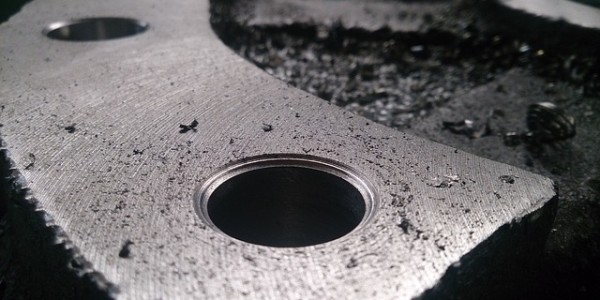What comes to mind when you think of the first industrial robot? You might think of some crude automaton that barely qualifies as a robot, let alone an industrial robot. It probably doesn’t lift very much, and probably relies quite heavily on assistance from human beings. Maybe it’s a robot in the same sense that a toaster is a robot, that is to say that it’s more of a tool that is used by humans rather than a true automated industrial robot.
Unimate was the first industrial robot. It was first patented by George Devol in 1954, sold to General Motors in 1960, and first installed and used in 1961. Surprisingly, the first ever industrial robot was quite similar to the industrial robots of today. Sure, the technology is a little more refined today than it was half a century ago, but Unimate carried out similar functions in a similar fashion to modern day industrial machines.
Watching a video of Unimate in action really puts this into perspective. But when you watch a black and white video from over 50 years ago of a robot that – to the untrained eye – doesn’t seem all that different from the industrial robots of today, it makes you wonder about robotic potential.
If Moore’s law is true, and computing power doubles every couple of years, then how come industrial robots from 1960 still resemble industrial robots from 2016, and what does this say about the potential of robotics?
Well, there are a couple of things to keep in mind here. The first is that while Unimate appears to be just like modern robots, it was not nearly as capable. The second is that there are revolutionary changes expected in the field of robotics over the next 10 years.
Unimate could carry out 200 different movements, pick up 75 pounds, accurate to 5 hundredths of an inch. Unimate could replace 10 workers, could operate unattended for 500 hours, and cost $20,000. It was able to withstand extreme temperatures, noxious fumes, and other hazardous work environments, which is one thing that remains true of today’s industrial robots.
Today’s industrial robots can lift a ton, are accurate to within 0.05 mm, and require practically no supervision.
Industrial robots are carrying out millions of different tasks around the world today. Advancements in sensors, batteries, motors, processors, and practically every element involved in robotics point to next generation industrial robots will be quite different from traditional industrial robots. Predictions suggest that rather than being stationary arms, industrial robots will be mobile, responsive, and exponentially more capable. These predictions also suggest that within the next 10 years, the industrial robotics industry will increase from a value of $11 billion to $100 billion.
